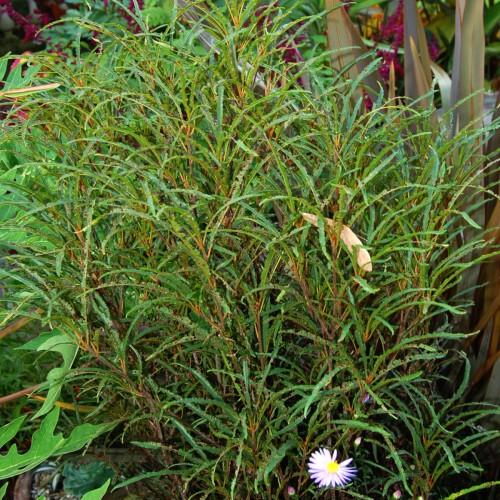
alder buckthorn
Frangula alnus 'Ron Williams'
Cycle:
Perennial
Watering:
Average
Hardiness Zone:
3 - 7
Flowers:
Flowers In Spring
Sun:
Full sun,part shade
Leaf:
Yes
Growth Rate:
Low
Maintenance:
Low
Drought Tolerant:
Yes
Salt Tolerant:
Yes
Care Level:
Medium
watering
Water the alder buckthorn every 7 to 10 days, providing enough water to moisten the soil but not so much that the plant stands in water. If the soil begins to dry out significantly (over 10 days) between waterings, adjust the frequency to every 7 days. Alder buckthorn prefers moist soil, so the soil should never become completely dry between waterings. During the warm summer months, it may be necessary to water the plant every 5 to 7 days, and during especially warm/dry periods, every 3 to 5 days. During cooler months, it should only need to be watered every 10 to 14 days.
sunlight
Alder buckthorn (Frangula alnus 'Ron Williams') is an adaptable member of the buckthorn family, and it thrives in both partially shaded and full sun locations. It prefers to be planted in a spot that receives at least 4 to 6 hours of direct sunlight each day. In areas with hot summers, some afternoon shade should be provided to protect its delicate foliage from sunburn. In cooler climates, alder buckthorn should be planted in a location that receives the most amount of sun possible, including full sun during the morning hours. It can tolerate some direct afternoon sun in milder climates, but full sun exposure is necessary for optimal growth.
pruning
Alder buckthorn (Frangula alnus 'Ron Williams') should be pruned in late winter or early spring only when necessary. It is best to prune no more than 1-third of the plant in any 1 year and to do so it small increments, as excessive pruning can cause stunted growth and weak foliage. Remove any dead or damaged branches first and take care not to over prune the shrub, as this can damage the plant’s health. After that, thin out the interior of the shrub to create a more open and airy form and then prune back any wayward or crossing branches. Finally, trim the remaining branches to shape the shrub and maintain its desired size.
